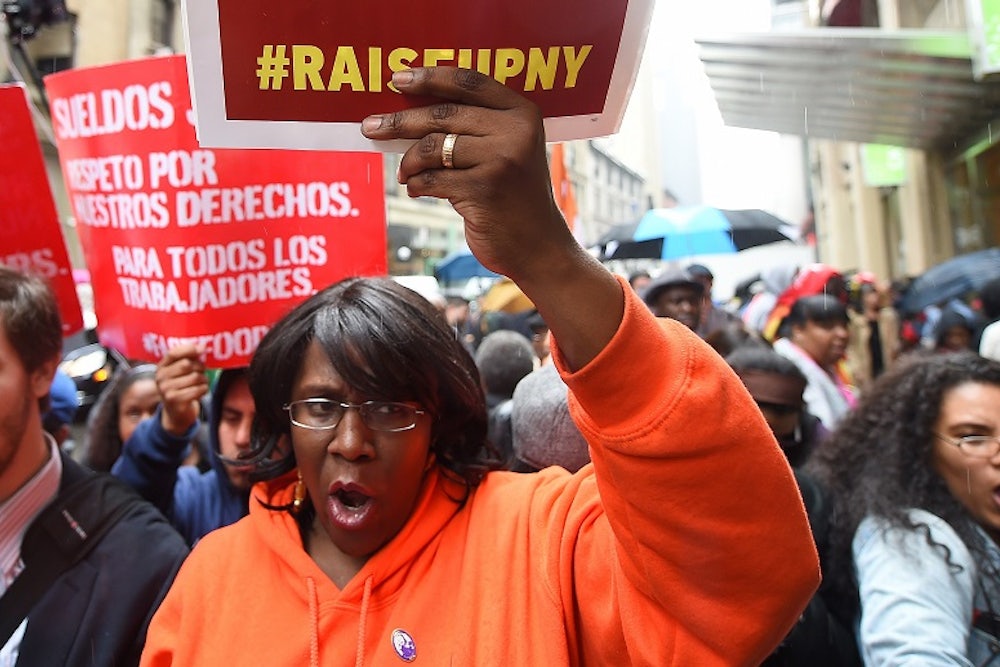On Monday evening, the Department of Labor put out a graphic, through the Twitter account of Labor Secretary Tom Perez, that illustrates an important point about the minimum wage. The problem, though, is that the graphic was tough to read. Here it is:

I’m not sure when these spiral graphics took off, but they need to stop. They’re hard to read and do a poor job conveying any meaning. But the point that the Labor Department is making is important. Here’s the chart in a different form:

My chart skills aren’t great either, but this is a better representation of the data. As you can see, the U.S.’s minimum wage-to-median wage ratio is far lower than the rest of the developed world. Why is this metric important? Because ultimately, it’s not the level of the minimum wage that matters to workers. It’s what they can get for that money—their standard of living. A $10 minimum wage in New York buys you a different amount of “stuff” than the same minimum wage does in Greece. The median wage is an easy way to account for these regional price changes.1
In other words, the Labor Department’s chart is actually showing that minimum wage workers can buy much less with their wages than minimum wage workers in other developed countries. That’s not necessarily a bad thing. As the minimum wage moves closer to the median, it imposes greater costs on businesses, which could be forced to cut back jobs. That’s the traditional conservative argument against the minimum wage.
But that doesn’t mean the economy cannot sustain a higher minimum wage with minimum job losses, if any at all. Consider this: A $10.10 minimum wage, as President Obama has proposed, would be 53 percent of the median wage in the U.S.—near the middle of other developed countries and lower still than Turkey, France, New Zealand, Portugal, Israel and Hungary (and tied with Australia). That would be a big improvement over the status quo: The U.S. currently offers one of the worst standards of living for minimum wage workers in the developed world.
This same dynamic exists in the U.S. where prices vary signficantly in different locations. For more on that, read Jared Bernstein in the New York Times.
